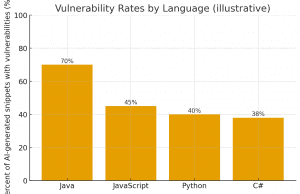How to Fix the Deceptive Site Ahead Warning
Encountering the Deceptive Site Ahead warning while trying to access your website can be alarming. This security alert indicates that browsers like Google Chrome have identified your site as potentially unsafe, often due to phishing or malicious content concerns. Such warnings can dramatically decrease traffic and damage your brand’s credibility.
Understanding the Deceptive Site Ahead Warning
Modern browsers and search engines prioritize user safety by issuing alerts for websites suspected of hosting social engineering attacks or malware. The Deceptive Site Ahead warning is designed to prevent users from visiting sites that might steal sensitive information or deliver harmful software.
This message typically appears when your site unknowingly contains deceptive content such as phishing forms, malicious redirects, or harmful downloadable files. In many cases, website owners may be unaware their site was compromised until these warnings surface.
What Does the Deceptive Site Ahead Warning Mean?
Google uses this warning to flag websites involved in:
- Pretending to be reputable brands or companies to trick users.
- Requesting sensitive information like passwords or credit card numbers through fraudulent forms.
- Embedding deceptive ads or third-party content that redirects users to harmful sites.
- Serving hidden malware or injecting code to perform unauthorized actions on visitors’ devices.
For example, compromised sites might host fake login pages mimicking legitimate services to capture user credentials. Such phishing tactics can lead to fraud, identity theft, and further spread of malware.
How to Check if Your Website Is Flagged
The quickest method to verify if your site has been flagged is to use Google’s Safe Browsing Site Status tool. Enter your website URL to receive detailed diagnostics about security issues or blocklists.
Additional insights can be found in Google Search Console if your site is verified there. The Security Issues report will display notifications related to phishing, malware, and social engineering.
Step-by-Step Guide to Fix the Deceptive Site Ahead Warning
Step 1: Review Google Security Issues Report
- Set up or log into your Google Search Console account.
- Navigate to Security & Manual Actions > Security Issues.
- Identify any reported problems such as phishing content, malware, or hacked content.
- Examine flagged URLs and the nature of the issue provided.
Step 2: Locate and Remove Deceptive Content
After identifying affected areas, thoroughly clean your site using the following strategies:
- Scan your website for malicious code and unauthorized changes using malware detection tools or server scans.
- Investigate recent updates or unknown files, particularly in CMS directories, plugins, and themes.
- Check your database for suspicious scripts, hidden iframe injections, or unknown administrative users.
- Remove all malicious code and backdoors, then update your software stack.
- Implement advanced website hardening techniques to prevent reinfection.
Research from cybersecurity firms, including Sucuri’s 2023 Website Security Report, highlights that over 60% of hacked sites involved compromised plugins or themes, underscoring the importance of keeping components up-to-date.
Step 3: Resubmit Your Website for Google Review
- Once your site is clean, return to Google Search Console and access the security issues section.
- Click on Request a Review and provide a detailed explanation of the cleanup steps taken.
- Submit your request and wait for Google’s evaluation.
Clear communication about remediation efforts can expedite the review process. Google states that reviews typically take several days but may vary depending on the issue complexity.
Step 4: Monitor and Await Review Outcome
Regularly check the Messages section in Google Search Console for updates on your review status. If the review confirms that your website is secure, the deceptive warning will be removed automatically within days.
If issues persist, Google will notify you with guidance on corrective actions.
Proactive Measures to Prevent Deceptive Site Warnings
Preventing security warnings starts with robust website security practices. Key preventive steps include:
- Keep all software updated: Regularly patch CMS platforms, plugins, themes, and server software to close known vulnerabilities.
- Be selective with plugins and themes: Avoid outdated or poorly reviewed components that might introduce security risks.
- Restrict admin access: Use strong, unique passwords, multi-factor authentication, and limit access to those who require it.
- Install SSL certificates: Ensure all data transmitted is encrypted to protect against interception.
- Isolate hosting environments: Use separate accounts or servers to minimize cross-site contamination risks.
- Regularly scan your website: Utilize automated tools to detect malware and vulnerabilities early.
- Maintain backup routines: Regular backups facilitate quick recovery in case of compromise.
- Deploy a web application firewall (WAF): Filter out malicious traffic, block bad bots, and mitigate DDoS attacks.
According to Akamai’s 2023 Web Application Threat Report, attacks targeting web applications, especially via compromised plugins and social engineering tactics, rose by 40% in the last year, signaling the urgent need for proactive security.
Conclusion
The Deceptive Site Ahead warning is a critical alert reflecting potential security risks on your website. Addressing it promptly protects your visitors and preserves your site’s reputation and search rankings. By systematically identifying deceptive content, removing malware, and adopting comprehensive security best practices, you can restore trust and maintain a safe online environment.
Staying vigilant by monitoring your site with tools like Google Safe Browsing and Search Console and implementing reinforced security measures is essential in today’s evolving cyber threat landscape.
References:
- Google Safe Browsing: https://transparencyreport.google.com/safe-browsing/search
- Google Search Console Security Issues: https://support.google.com/webmasters/answer/9044101?hl=en
- Sucuri 2023 Website Security Report: https://sucuri.net/reports/2023-website-security-report/
- Akamai 2023 Web Application Threat Report: https://www.akamai.com/us/en/multimedia/documents/state-of-the-internet/soti-web-application-threat-report-2023.pdf
- Website Hardening Tips: https://blog.sucuri.net/2019/10/top-10-website-hardening-tips.html



